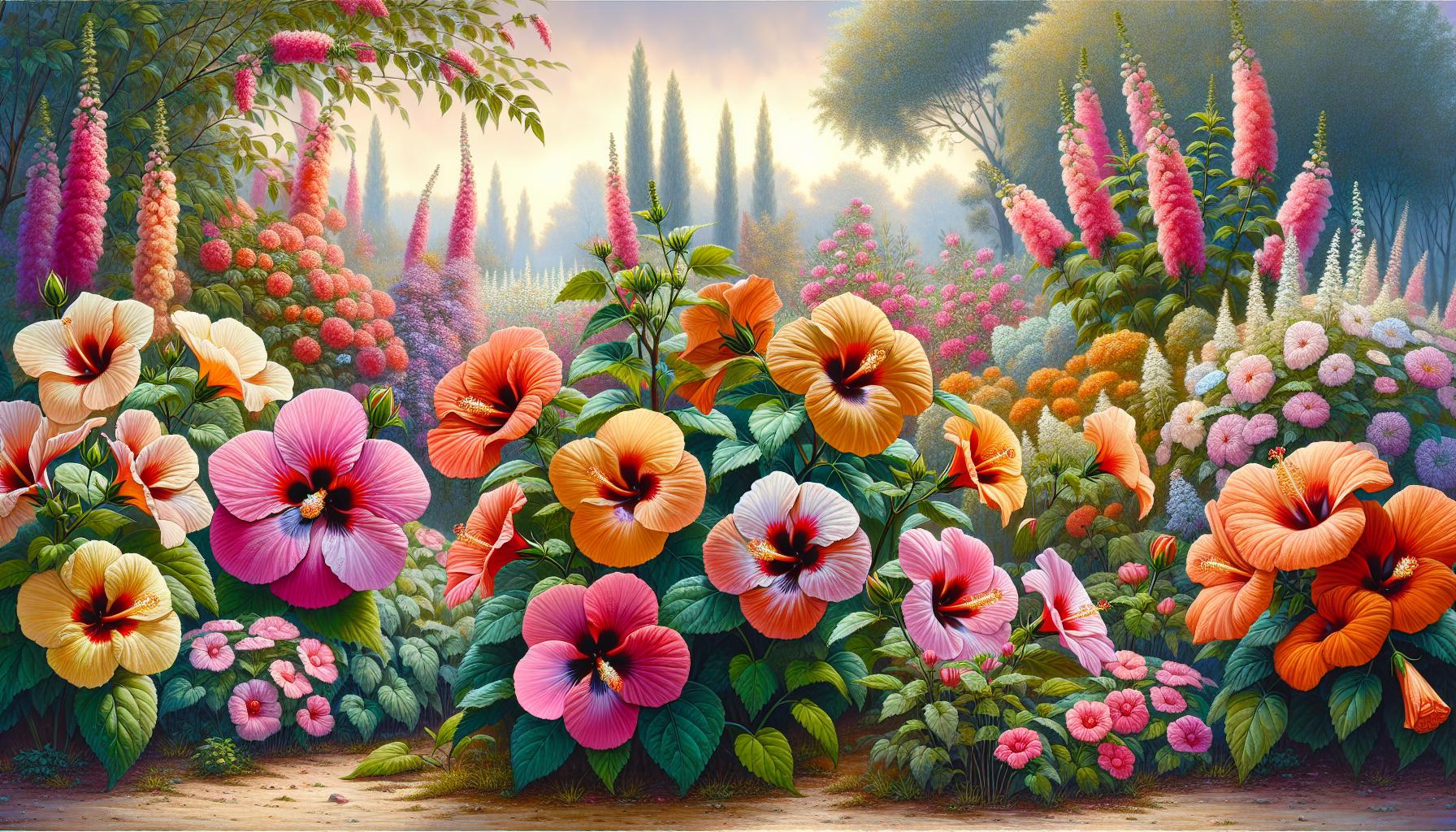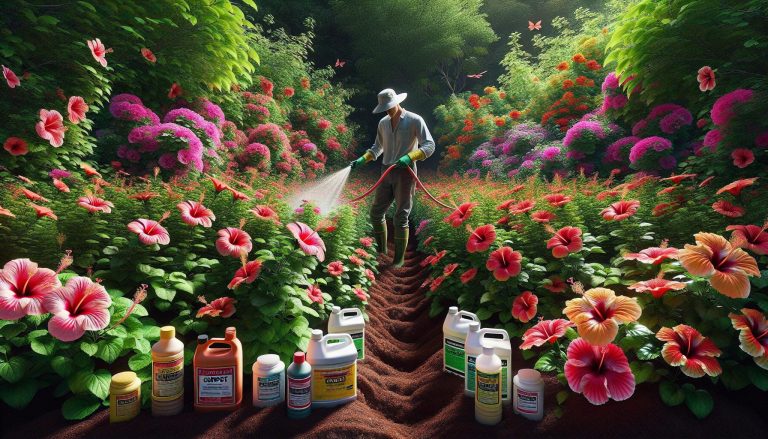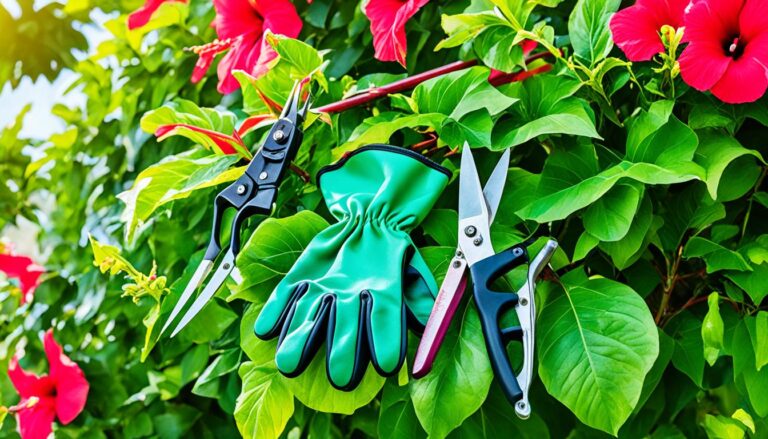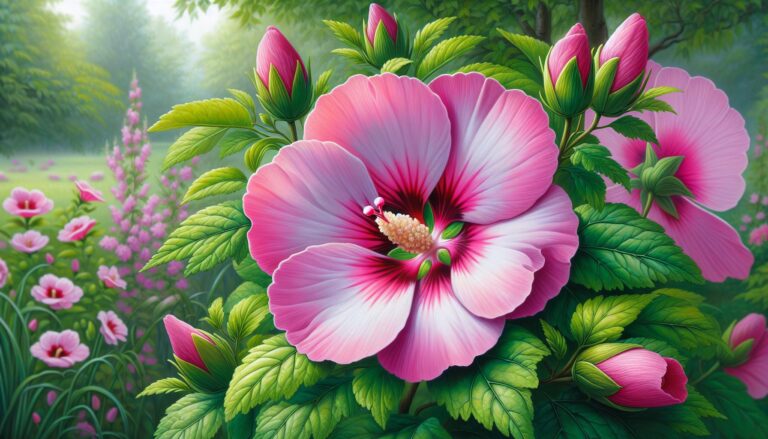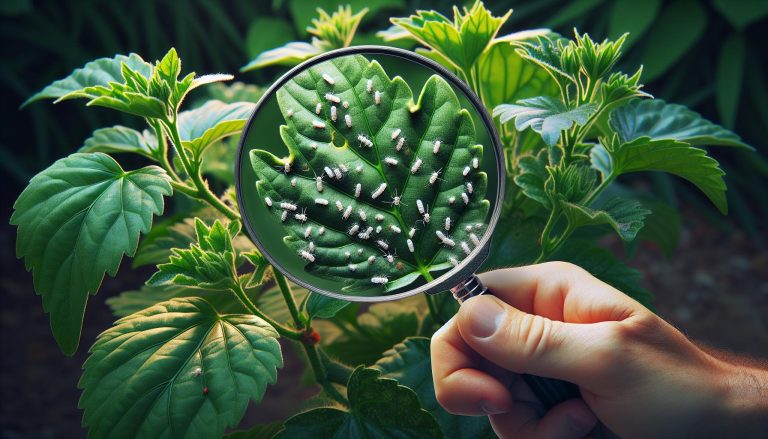Are Hibiscus Perennials? Discover Types, Care Tips, and Benefits for Your Garden
As I stroll through my garden, my eyes are drawn to the vibrant, trumpet-shaped blooms of hibiscus flowers. These stunning beauties never fail to captivate me, but I’ve often wondered: are hibiscus perennials? It’s a question that stumps many gardeners, and for good reason.
The answer isn’t as straightforward as you might think. Hibiscus plants come in various species, each with its own unique characteristics and growing habits. Some thrive year after year, while others are short-lived. Understanding the different types of hibiscus and their specific needs is key to determining whether they’ll return season after season in your garden. Let’s dive into the world of hibiscus and uncover the truth about their perennial nature.
Understanding Hibiscus Plants
Hibiscus plants are diverse and captivating, with a wide range of species and varieties. I’ve found that understanding their types and characteristics is crucial for successful cultivation and enjoyment of these beautiful flowers.
Types of Hibiscus
Hibiscus plants come in three main categories:
- Tropical hibiscus (Hibiscus rosa-sinensis):
- Evergreen shrubs or small trees
- Showy, large flowers in vibrant colors
- Thrive in warm climates (USDA zones 9-11)
- Hardy hibiscus (Hibiscus moscheutos):
- Herbaceous perennials
- Dinner plate-sized blooms
- Cold-hardy (USDA zones 4-9)
- Rose of Sharon (Hibiscus syriacus):
- Deciduous shrubs
- Smaller flowers than other types
- Adaptable to various climates (USDA zones 5-9)
Each type has unique care requirements and growth habits, influencing their perennial nature in different regions.
Characteristics of Hibiscus Flowers
Hibiscus flowers are known for their striking features:
- Size:
- Range from 2 inches to 12 inches in diameter
- Hardy hibiscus boasts the largest blooms
- Colors:
- Vibrant hues including red, pink, orange, yellow, and white
- Some varieties have bi-color or multi-color petals
- Structure:
- Five overlapping petals
- Prominent central stamen column
- Blooming period:
- Tropical hibiscus: Year-round in warm climates
- Hardy hibiscus and Rose of Sharon: Summer to early fall
- Lifespan:
- Individual blooms typically last one day
- Plants produce new flowers regularly during the blooming season
Understanding these characteristics helps in selecting the right hibiscus variety for your garden and appreciating their unique beauty.
Are Hibiscus Perennials?
Hibiscus plants are indeed perennials, but their behavior varies depending on the species and growing conditions. Hibiscus plants fall into two main categories: tropical hibiscus and hardy hibiscus. Each type has distinct characteristics that affect their perennial nature.
Tropical Hibiscus
Tropical hibiscus (Hibiscus rosa-sinensis) are perennials in warm climates but act as annuals in colder regions. Here’s what you need to know:
- Native to tropical and subtropical areas
- Thrive in USDA hardiness zones 9-11
- Can’t survive freezing temperatures
- Grow as perennials in frost-free climates
- Treated as annuals or houseplants in cooler regions
In colder areas, I’ve found success by:
- Growing tropical hibiscus in containers
- Moving them indoors during winter
- Providing bright light and consistent moisture
This approach allows tropical hibiscus to live for many years, even in non-tropical climates.
Hardy Hibiscus
Hardy hibiscus, also known as perennial hibiscus, are true perennials that can withstand colder temperatures. Key points include:
- Native to temperate regions
- Survive in USDA hardiness zones 4-9
- Die back to the ground in winter
- Regrow from the roots in spring
- Include species like H. moscheutos and H. syriacus (Rose of Sharon)
Hardy hibiscus care tips:
- Cut back dead foliage in late fall or early spring
- Apply a layer of mulch for winter protection
- Be patient in spring, as they’re slow to emerge
I’ve grown hardy hibiscus for years, and they’re reliable perennials that return each spring with stunning blooms.
Factors Affecting Hibiscus Longevity
Several factors influence the lifespan and overall health of hibiscus plants. Understanding these elements is crucial for maintaining vibrant, long-lasting hibiscus in your garden.
Climate and Hardiness Zones
Hibiscus longevity is closely tied to climate and hardiness zones. Here’s what you need to know:
- Tropical hibiscus: Thrive in USDA zones 9-11
- Hardy hibiscus: Survive in zones 4-9
- Rose of Sharon: Adapt to zones 5-9
Tropical varieties struggle in temperatures below 50°F (10°C). Hardy types and Rose of Sharon tolerate colder climates but may die back in winter.
In colder regions:
- Plant hibiscus in sheltered areas
- Use mulch for root protection
- Consider container planting for easy relocation
Proper zone selection ensures your hibiscus survives year after year.
Proper Care and Maintenance
Consistent care significantly impacts hibiscus longevity. Follow these tips:
Watering:
- Keep soil consistently moist
- Water deeply, 1-2 inches per week
- Adjust frequency based on rainfall and temperature
Fertilizing:
- Use balanced, water-soluble fertilizer monthly
- Reduce feeding in fall and winter
- Avoid over-fertilizing, which can lead to leaf burn
Pruning:
- Remove dead or damaged branches
- Shape plants in early spring
- Deadhead spent blooms to encourage new growth
Pest control:
- Monitor for aphids, whiteflies, and spider mites
- Use insecticidal soap or neem oil for treatment
- Implement natural predators like ladybugs
Winter care:
- Bring tropical varieties indoors
- Mulch hardy types heavily
- Reduce watering for dormant plants
By addressing these factors, you’ll promote healthy growth and extend your hibiscus’s lifespan.
Growing Hibiscus as Perennials
Growing hibiscus as perennials requires specific techniques tailored to the plant’s needs. By following proper care methods, you’ll enjoy these beautiful blooms year after year.
Overwintering Techniques
Overwintering hibiscus plants is crucial for their survival in colder climates. For tropical varieties, bring potted plants indoors before the first frost. Place them in a bright, warm spot with temperatures between 55-70°F (13-21°C). Reduce watering frequency but don’t let the soil dry out completely. For hardy hibiscus, cut back the stems to about 6 inches above ground level after the first frost. Apply a thick layer of mulch (4-6 inches) around the base to protect the roots from freezing temperatures. In spring, gradually remove the mulch as temperatures warm up.
Pruning and Fertilizing Tips
Pruning hibiscus promotes healthy growth and abundant blooming. For tropical hibiscus, prune in late winter or early spring before new growth appears. Remove dead, damaged, or crossing branches. Shape the plant by cutting back about 1/3 of its height. Hardy hibiscus benefit from pruning in early spring, just as new growth emerges. Cut back all stems to about 6 inches above ground level.
Fertilizing schedule:
| Season | Fertilizer Type | Frequency |
|---|---|---|
| Spring | Balanced (10-10-10) | Every 2-3 weeks |
| Summer | High-potassium | Monthly |
| Fall | Low-nitrogen | Once |
Apply a balanced, water-soluble fertilizer every 2-3 weeks during the growing season. Switch to a high-potassium fertilizer in late summer to promote bud formation. Reduce fertilization in fall and stop completely in winter. Always water thoroughly after fertilizing to prevent root burn.
Remember, overfeeding can lead to excessive foliage growth at the expense of flowers. Monitor your plants closely and adjust your feeding schedule as needed. With proper pruning and fertilizing, your hibiscus will thrive as stunning perennials in your garden.
Benefits of Perennial Hibiscus in Gardens
Perennial hibiscus plants offer numerous advantages for garden enthusiasts. These long-lasting beauties provide both aesthetic appeal and practical benefits to any landscape.
Year-Round Beauty
Perennial hibiscus plants transform gardens with their striking presence throughout the seasons. In spring and summer, they burst into life with vibrant, large blooms that can reach up to 12 inches in diameter. Their lush foliage adds texture and depth to garden beds, even when not in bloom. During fall, the changing leaves create a colorful display before the plant enters its dormant winter state.
I’ve found that strategically placing perennial hibiscus can create focal points in the garden. Their tall stems, often reaching 4-7 feet, make excellent backdrops for shorter plants. The diverse color palette of hibiscus flowers, ranging from deep reds to soft pinks and pristine whites, allows for creative color combinations in garden designs.
Cost-Effective Gardening
Choosing perennial hibiscus for your garden is a smart financial decision. Unlike annuals that require yearly replacement, perennials return season after season, reducing long-term gardening expenses. Here’s how perennial hibiscus contribute to cost-effective gardening:
- Longevity: Perennial hibiscus can thrive for 5-10 years with proper care.
- Low maintenance: Once established, they require minimal upkeep.
- Propagation potential: Divide mature plants to create new ones for free.
- Reduced labor: Less time and effort spent on annual replanting.
To illustrate the cost savings, consider this comparison:
| Plant Type | Initial Cost | Replacement Frequency | 5-Year Cost |
|---|---|---|---|
| Annual | $10 | Yearly | $50 |
| Perennial | $20 | Every 5-10 years | $20 |
By choosing perennial hibiscus, gardeners can save money while enjoying consistent beauty in their outdoor spaces. These savings can be redirected towards other garden improvements or expanding your plant collection.
Conclusion
Hibiscus plants offer a stunning variety of options for gardeners. Whether you choose tropical, hardy, or Rose of Sharon varieties, understanding their unique needs is key to success. By selecting the right type for your climate and providing proper care, you’ll enjoy vibrant blooms year after year. Perennial hibiscus varieties are particularly valuable, offering long-term beauty and cost-effectiveness. With their impressive height, diverse colors, and low maintenance requirements, these plants can transform any garden into a colorful oasis. Embrace the world of hibiscus and watch your garden flourish with these captivating perennials.

